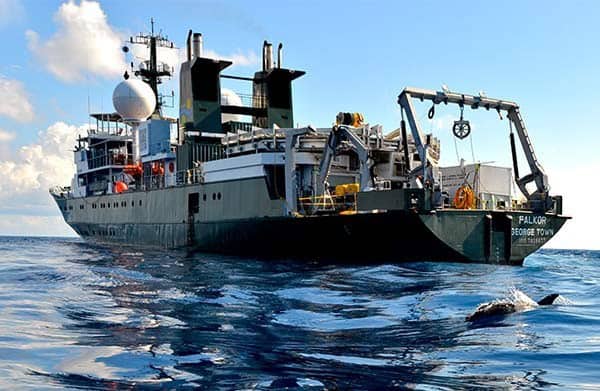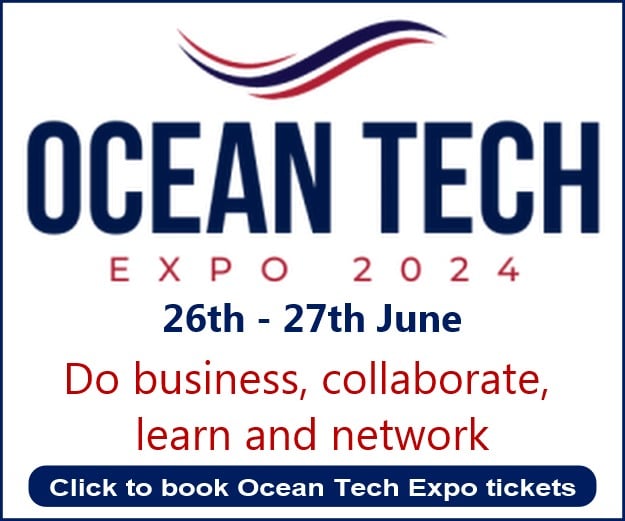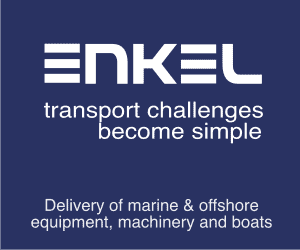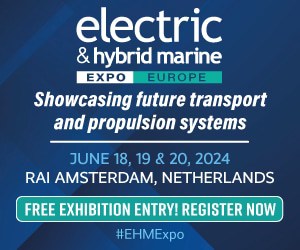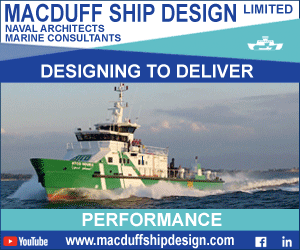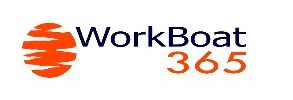By Geraint West – Head of Science – Sonardyne International
IN BRIEF
2021 is the start of the UN’s Ocean Decade. It couldn’t come sooner, says Head of Science, Geraint West. We have a ‘once in a lifetime’ opportunity to improve our understanding of the oceans and ensure that their future management benefits humanity. We asked Geraint why – but also how and what his key takeaways are as we enter the Ocean Decade.
WHY DOES THE OCEAN DECADE MATTER?
Like many people, I’m increasingly concerned by the state of our oceans and the increasing pressures that changing climate, population growth and our use of them are creating. Personally, I’m therefore inspired by the United Nations (UN) declaration of a Decade of Ocean Science for Sustainable Development (the Ocean Decade).
The Ocean Decade was triggered by the UN’s First World Ocean Assessment, published in 2016, which highlighted the decline in ocean health. However, for me, what is most important is that, since then, the concept of sustainability has been embedded in the Ocean Decade. This acknowledges that we will have a continuing need for use of the ocean, our seas and marine resources; it’s not just about creating protected areas, although that of course does have a crucial part to play. This concept is in alignment with UN Sustainable Development Goal (SDG) 14, to “conserve and sustainably use the oceans, seas and marine resources for sustainable development”.
The bottom line, though, is that we can’t change how we use the oceans without better scientific understanding of them. In this respect, the Ocean Decade’s strapline, “the science we need for the ocean we want”, is an accurate summary of what it’s all about.

HOW WILL TECHNOLOGY CONTRIBUTE TO THE OCEAN DECADE?
Throughout my 38 years of working in the marine sector, technology has always been central to measuring and interpreting the environment and the Ocean Decade will be no different. So, it’s no surprise to me that the Ocean Decade specifically highlights the role of innovative technologies in changing both access to and increasing overall capacity of ocean science research infrastructure. Indeed, that’s pretty much what I spent my 15 years at the National Oceanography Centre doing, prior to joining Sonardyne. The difference at Sonardyne is that I’m now privileged to be working across a global community of universities and institutes on projects that range from the coast to the deep ocean.
So, what is this community telling me? In summary: we need to be more efficient and economic at collecting data and observing ocean processes at ever increasing resolution and temporal and spatial scales. This means making technology more capable, but also increasing its accessibility to a wider base of users. In addition, there’s a pressing need to reduce the carbon footprint of research operations. In this respect, over the past year, I’ve been fortunate to serve on the steering committee of the Natural Environment Research Council’s Net Zero Oceanographic Capability project. There are clear messages that technology will play a key role here as well, especially in enabling remote and autonomous oceanographic operations.
HOW WILL SONARDYNE’S TECHNOLOGY HAVE AN IMPACT ON THE OCEAN DECADE?
In one word, it’s innovation. Sonardyne have a fantastic track record as an innovator. We recently received our fourth Queen’s Award, for developing technology to measure seabed deformation, which has been used to study a variety of processes, ranging from subduction zones to undersea landslips near volcanoes.

In 2019, we also won awards with our partners Nekton, Sky and Associated Press recognising a number of ‘firsts’, including the first multi-camera live wireless signal, in full broadcast quality, from manned submersibles and the first official speech broadcast from underwater, by the President of the Seychelles. Using our BlueComm free-space optical communications technology, these were not only major technological achievements, but also important lessons in how the company can play a role in making the Ocean Decade meaningful to wider society – and we look forward to doing more of that in the months and years to come.
At the other end of the spectrum, we’ve introduced new, smaller instruments, enabling researchers with smaller budgets to access similar capabilities to some of our industry-standard systems when they’re operating in shallow waters and on smaller vehicles.
These include our Micro-Ranger 2 Ultra-Short BaseLine (USBL) positioning system, which is already establishing a track record as a powerful package for environmental monitoring (if you want to know more about Micro-Ranger, please sign-up for our upcoming shallow water application webinars). Likewise, our SPRINT-Nav Mini is the smallest hybrid acoustic navigator available and, although it was only launched recently, it has been selected by the University of Southampton for installation on their new SPARUS II autonomous underwater vehicle (AUV).

HOW ARE SONARDYNE HELPING TO REDUCE THE CARBON FOOTPRINT OF OCEAN SCIENCE?
I know from my own experience of managing large, multi-disciplinary research vessels (RVs), that these are increasingly costly ships to run. They also have the largest carbon footprint of any of the tools used by oceanographers. Nevertheless, I don’t see them disappearing any time soon, due to the continuing need for large and, in some cases, power hungry over-the-side systems. That means it’s vitally important that we maximise the productivity of these vessels when they are at sea.
Going back 20 years, when I first went to sea on an RV with a USBL system, we purely thought of it as a system for tracking tow-bodies and remotely operated vehicles (ROV), while we still worked largely blindly with a range of other subsea systems. USBL systems can do far more today. Sonardyne’s Ranger 2 USBL system is now a highly flexible tool that increases productivity at sea. It can be used for a wide range of tasks from locating and releasing our RT 6 acoustic releases to simultaneous tracking and control of a swarm of AUVs.

It can also help reduce time – and therefore emissions – at sea. For example, Ranger 2’s telemetry capability means there’s no need to stop and hold station while you deploy a modem dunker over the side to communicate with seabed landers or moorings. You can even, reconfigure your instruments in-situ, without needing to recover them to the deck of an RV. This can also all be done from a smaller carbon footprint vessel and/or a vessel of opportunity, with either our Ranger 2 Gyro USBL or one of our other USBL systems, such as Mini-Ranger 2, because they all use the same 6G hardware and our Wideband 2 acoustics. That means you can easily interchange both your in-water instruments and USBL system.
We can’t talk about this subject area without mentioning the increasing use of uncrewed surface vehicles (USV). While, we’ve been providing the capability for smaller USVs to both harvest data and make precise seabed measurements for some time. We’ve also got a track record in working with USVs to support over-the-horizon ROV and AUV operations. More is coming, as we’ve seen with the launch of Ocean Infinity’s Armada fleet, which will be the world’s largest and most environmentally sustainable fleet of 17 ocean-going, multi-role robotic vessels – complete with Sonardyne’s Ranger 2 USBL systems.
When it comes to carbon emissions, ship size does matter. It’s about enabling the right platform to be used for the right job, which is the difference our technology makes.

How different will ocean science look at the end of the Ocean Decade?
Ship time is only one part of the challenge, whether crewed or uncrewed. That’s why we’ve also focused on low-power sensing solutions making instrument deployments in excess of a decade possible. So without a doubt, the future looks increasingly remote and autonomous.
Yes, this means that we’re going to see more long-term landers, moorings, USVs and AUVs, but these systems are also going to be smarter. This reflects a common trend that we’re seeing within the ocean science sector. Indeed, right across the marine sector in general, we’re seeing a common emphasis on cost reduction, as well as a growing need to deliver value-added actionable information direct to desks and labs ashore with as low a carbon footprint as possible.
This is going to mean an increasing focus on dealing with sensor data quality at source, in order to provide assurance of the delivered information. A great example of this is Sonardyne’s work on understanding how pressure sensors behave over time, which has been fundamental to the practical multi-year deployment of seabed pressure measurement instruments. Most recently, this has led to the development of our in-situ Ambient-Zero-Ambient (AZA) calibration mechanism, which has recently been ordered by two institutes for deployment in depths down to 7,000 metres.

WHAT’S THE TAKEAWAY MESSAGE THEN?
As a company, we’re really looking forward to being part of the Ocean Decade, not just because it’s going to be an exciting time for subsea technology, but because we also believe in its aims to change the ocean for the better. That’s because the future of our company depends entirely on their continuing ability to sustain human activity – obviously that’s true not just in ocean science but in the energy and defence sectors as well. It’s not surprising therefore that we’re seeing the same drivers across all these sectors and I think that’s going to be the benefit of the Ocean Decade as both energy and defence are going to be investing in complementary technologies.
For us, it’s also not just about our technology. As an employer and a business, we have a role to play in how society tackles climate change and reducing our impact on the oceans. We look forward to telling you more about this on June 8, World Ocean Day. Watch this space!
But back to Ocean Science. This is a diverse sector that comprises a wide variety of disciplines studying and providing data on the global marine environment. We count a wide range of organisations, from local laboratories to the major global institutes, among our customer base, providing off the shelf and innovative custom engineered solutions and support. In short, we offer the tools for the science we need for the ocean we want.



